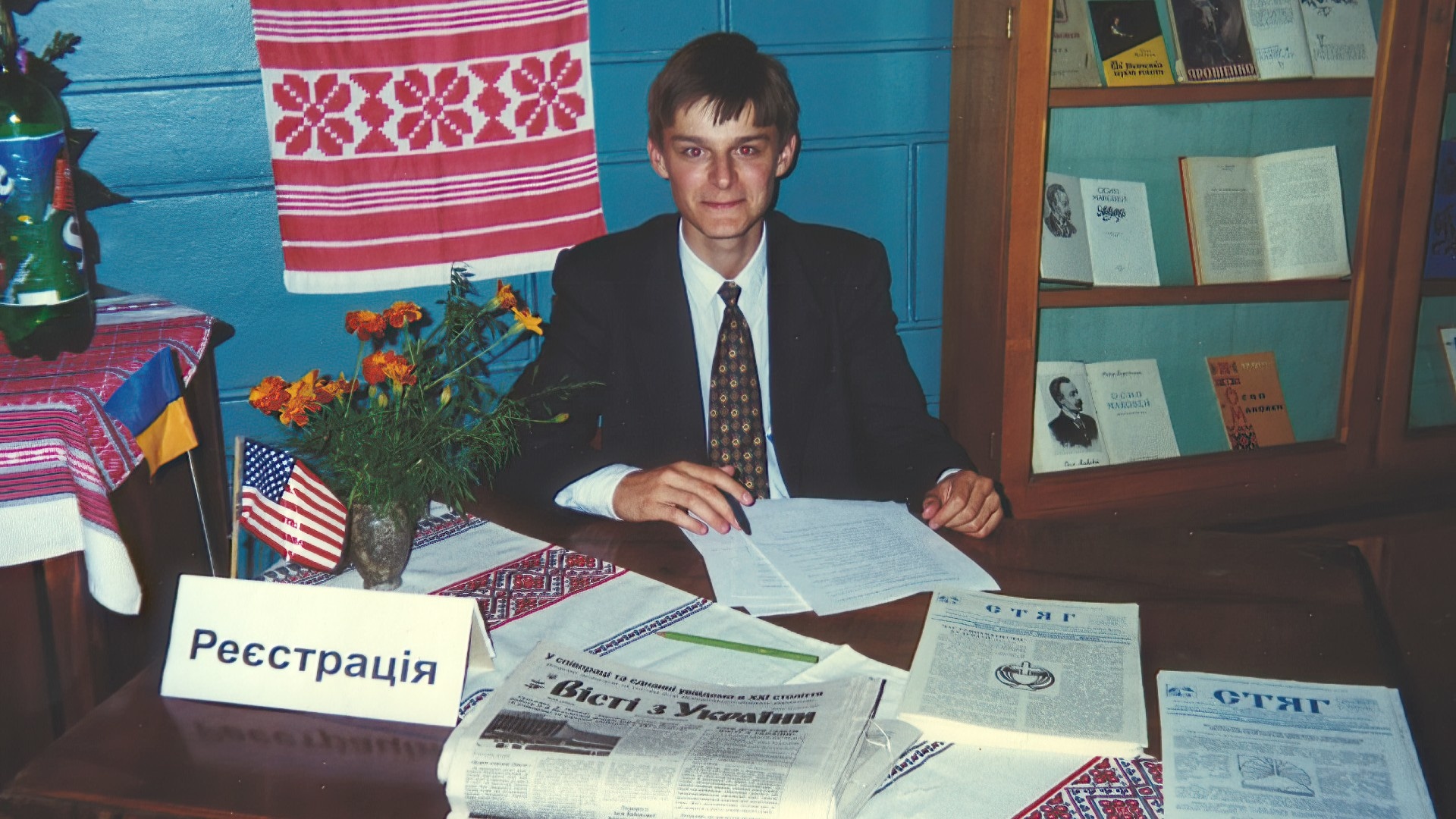Minnesota’s Ukrainian Americans watch with concern as Russian forces amass on borders abroad
Armored personnel carriers.
Tanks.
Helicopter gunships.
And 100,000 troops.
A show of Russian military might along the 1400-mile Russia-Ukraine border.
All of this is being watched closely by many in Minnesota’s Ukrainian American community, now estimated at about 17,000 people.

“It’s definitely a scary situation,” says Oleksandr Komarenko, who moved to Minnesota from Kyiv, Ukraine in 1997. “People are very concerned. This is probably the largest, the greatest buildup of the Russian military on our borders pretty much since the beginning of our history of the Ukrainian independence.”
“No one I speak with has a clear sense of what is intended,” declares Stefan Iwaskewycz, a former board member of the Ukrainian Center in Northeast Minneapolis.
Born in the U.S., he’s concerned about relatives living in Ukraine.
“Amongst the family and friends that I’m close to, we’re constantly talking about it,” Iwaskewycz notes. “Whether anyone would actually take up arms from my family, my cousins, or who might actually fight? I mean, war is war, right? Who knows what the scale of it is. Where the bombs might fall, or the shooting might happen.”
That uncertainty is troubling not only to the community here — but to U.S. leaders as well.
“The current situation demands that we reinforce the deterrent and defensive posture on NATO’s eastern flank,” Pentagon Press Secretary John Kirby told reporters. “We do not know if Russia has made a final decision to further invade Ukraine, but it clearly has that capability.”
Friday, it was announced the president of France and the chancellor of Germany will travel to Moscow and Kyiv in a diplomatic effort to deter Russian President Vladimir Putin from launching an invasion of Ukraine.
The visits come as China now backs Russia’s demand that NATO should not be allowed to expand to Ukraine.
Meanwhile, the U.S. is also responding.
This week, President Biden ordered the deployment of 2,000 troops from Fort Bragg, North Carolina to Poland and Germany.
Another 1,000 are being shifted from Germany to Romania.
Thousands more in the U.S. are on heightened alert.
“There is a lot of worry today though because now the numbers are staggering,” Komarenko says.
Now a counselor-educator at Mankato State, he moved to Minnesota to pursue a college education.
Komarenko’s biggest concern is for the safety of family members in Ukraine, should the Russians invade.
His mother Tetiana is in her seventies and still lives in Kyiv.
“She’s not very mobile, and the past couple of years with COVID, she has put off her knee treatments, so it would be really difficult for her,” Komarenko explains. “With Putin’s armor and heavily mechanized troops locked and loaded, they could try a blitzkrieg any moment.”
But what exactly is Putin up to?
“Ukraine can easily turn out to be Vietnam for the Russians,” says Theofanis Stavrou, a Russian history professor at the University of Minnesota.
Stavrou says Putin may be bluffing his way into concessions with the West.
He adds, if Russia does invade, it will face punishing economic sanctions, and an insurgency inside Ukraine.
“This is not going to be a pleasant experience for the Russians in terms of casualties, in terms of their economy,” Stavrou says. “I think there is plenty of fighting force within Ukraine. Nationalism is very important for the Ukrainians.”
Experts say Ukraine now has about 215,000 military personnel.
Women have taken on combat roles since 2016.
In the eastern Ukraine city of Kharkiv, female volunteers are being trained to fight the Russians.
“This city has to be protected,” declares Viktoria Balesina, one of those undergoing training. “Russia has a big appetite, and they are taking piece by piece. We need to do something, not to panic and fall on our knees. We do not want this.”
“For Ukrainians, it’s very stressful,” Iwaskewycz says. “They have been feeling like their country’s been on the brink of war or already at war for years.”
Komarenko says his mother is prepared in case there is an invasion.
“She does have her kind of basics ready, and a ‘bug-out’ bag so to speak, containing documents and things of fresh necessity,” he says. “Everybody hopes the Russians would not really get into big cities and engage in street fighting.”
At this tense time, Ukrainians from Kyiv to Minneapolis say they are holding out hope.
But they also say their country is ready to fight.
“If there’s an invasion, Ukrainians are going to fight like crazy, right?” Iwaskewycz says. “The history of the Ukrainian people is to constantly resist whenever a foreign power invades.”